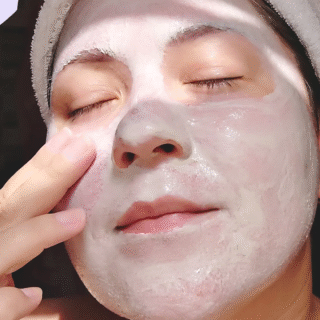How to Build a Skincare Routine – A Complete Guide for Healthy, Glowing Skin

Taking care of your skin is not just about beauty—it’s about health, confidence, and self-care. Many people feel lost when they hear the words “skincare routine”. Should you buy dozens of products? Do you have to follow complicated steps? The truth is, building a skincare routine can be simple and enjoyable if you understand the basics.
In this guide, we’ll walk through how to create a skincare routine that works for your skin type, how to choose products wisely, and how to keep it consistent for lasting results.
Step 1: Understand Your Skin Type
Before buying any products, you must know your skin type. Using the wrong products can lead to dryness, oiliness, or breakouts.
Here are the main skin types:
| Skin Type | Characteristics | Common Concerns |
| Normal | Balanced oil and moisture | Few breakouts, healthy texture |
| Dry | Lacks natural oil, feels tight | Flakiness, dullness |
| Oily | Excess sebum production | Shine, enlarged pores, acne |
| Combination | Oily in some areas (T-zone), dry in others | Uneven texture |
| Sensitive | Easily irritated, redness | Allergic reactions, burning sensation |
Tip: To test your skin type, wash your face with a gentle cleanser, pat dry, and wait an hour without applying anything. If your skin feels tight, you’re likely dry; if it looks shiny, you’re oily; if only your forehead and nose are shiny, you’re combination; if it feels fine, you have normal skin.
Step 2: Follow the Basic Skincare Steps
You don’t need 15 steps to have great skin. A basic routine includes three essential steps:
1. Cleansing – Morning and Night
A gentle cleanser removes dirt, oil, and makeup without stripping your skin. Avoid harsh soaps, as they can damage the skin barrier.
Tips for Cleansing:
- Use lukewarm water, not hot.
- Massage the cleanser for at least 30 seconds.
- If you wear makeup, use a makeup remover or cleansing balm before washing.
2. Moisturizing – Lock in Hydration
Moisturizer keeps your skin soft and prevents dryness. Even oily skin needs hydration—just choose a lightweight, oil-free formula.
Types of Moisturizers:
- Gel-based: For oily and combination skin.
- Cream-based: For dry and sensitive skin.
- Lotion: For normal skin.
3. Sun Protection – The Most Important Step
Sunscreen is your skin’s best friend. UV rays can cause premature aging, sunburn, and even skin cancer.
Sunscreen Tips:
- Use SPF 30 or higher.
- Apply every morning, even indoors (UV rays can enter through windows).
- Reapply every 2 hours if you’re outdoors.
Step 3: Add Targeted Treatments (Optional)
Once you have the basics, you can add serums or treatments for specific skin concerns.
- For acne: Salicylic acid or benzoyl peroxide.
- For dullness: Vitamin C serum.
- For wrinkles: Retinol or peptides.
- For dryness: Hyaluronic acid.
Start slowly—introducing one new product at a time—to avoid irritation.
Step 4: Build a Morning & Night Routine
Here’s an example:
Morning Routine
- Cleanser
- Vitamin C serum (optional)
- Moisturizer
- Sunscreen
Night Routine
- Cleanser
- Targeted treatment (retinol, acne cream, etc.)
- Moisturizer
Step 5: Avoid Common Skincare Mistakes
Many people harm their skin without realizing it. Here are some mistakes to avoid:
- Over-exfoliating: Too much scrubbing can damage skin. Limit to 1–2 times a week.
- Mixing harsh ingredients: Some actives don’t go well together, like retinol and vitamin C in the same routine.
- Changing products too quickly: Give a product at least 4–6 weeks before judging results.
- Not removing makeup before bed: This clogs pores and speeds up aging.
Step 6: Be Consistent and Patient
Skincare is not an overnight miracle. It may take 6–12 weeks to see noticeable changes. The key is consistency—stick to your routine every day.
Simple Skincare Routine by Skin Type
| Skin Type | Morning | Night |
| Normal | Cleanser → Moisturizer → SPF | Cleanser → Moisturizer |
| Dry | Hydrating Cleanser → Cream Moisturizer → SPF | Hydrating Cleanser → Rich Cream |
| Oily | Gel Cleanser → Oil-free Moisturizer → SPF | Gel Cleanser → Lightweight Moisturizer |
| Combination | Gentle Cleanser → Moisturizer (light) → SPF | Gentle Cleanser → Moisturizer (balance) |
| Sensitive | Gentle, fragrance-free Cleanser → Calming Moisturizer → SPF | Gentle Cleanser → Healing Moisturizer |
Step 7: Keep It Budget-Friendly
You don’t need expensive products. Many drugstore brands work just as well as luxury ones. Look for products with simple, proven ingredients like glycerin, niacinamide, and ceramides.
Final Thoughts
Building a skincare routine is about knowing your skin, choosing the right products, and staying consistent. Start simple, master the basics, then add treatments as needed. Your skin will thank you with a healthy, radiant glow.
FAQs About Building a Skincare Routine
1. Can I skip moisturizer if I have oily skin?
No. Oily skin still needs hydration. Use a lightweight, non-comedogenic moisturizer to prevent overproduction of oil.
2. How soon will I see results from my skincare routine?
It usually takes 6–12 weeks of consistent use to notice significant improvement.
3. Should I use the same products in summer and winter?
Not always. In winter, you may need richer moisturizers; in summer, lighter products might work better.
4. Is natural skincare always better?
Not necessarily. Some natural ingredients can still irritate the skin. Focus on proven, safe formulas regardless of whether they are natural or synthetic.
5. How do I know if a product is irritating my skin?
Signs of irritation include redness, itching, burning, or increased breakouts. If this happens, stop using the product immediately and consult a dermatologist if needed.


